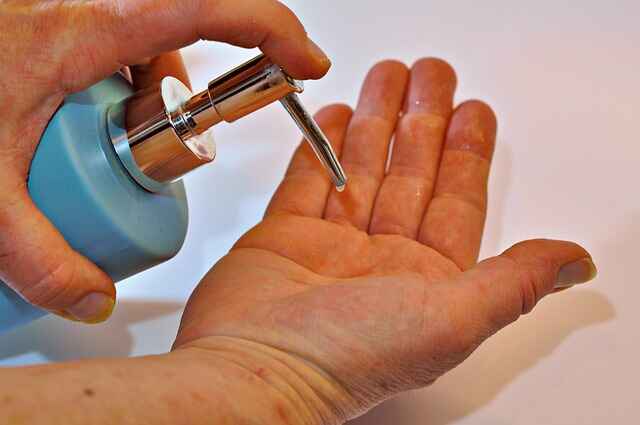Psoriasis is a skin condition caused by an autoimmune response that causes itching and irritation. Skin cells multiply too quickly when the immune system is overactive, which causes inflammation. As a result, the skin develops into red patches that are rough and covered with white scales. It takes a few weeks or months to develop and shed off normal skin cells. They can grow anywhere, but they are most commonly found on the scalp, elbows, knees, and lower back. This skin problem cannot be passed down from person to person. Members of the same family do experience it infrequently. It primarily affects a few specific parts of the population. In severe cases, psoriasis can spread to large areas of the body.
Types of Psoriasis
Plaque psoriasis
This type of psoriasis is the most common. It affects between 80% and 90% of those with psoriasis. It appears as swollen, red skin patches that are covered in silvery-white scales. The patches typically emerge on the scalp, chest, and limbs, especially the elbows and knees, and normally form in a symmetrical pattern over the body.
Guttate psoriasis
It usually begins in childhood or young adulthood and causes small, red spots on the torso and limbs. Small pimples that emerge on the skin unexpectedly are a common symptom of this type. Even without treatment, this type may heal in a few weeks. However, other conditions are more difficult to treat.
Also Read: 5 Common Health Problems in Men of All Ages

Inverse psoriasis
This type appears in areas where skin touches the skin, such as armpits, genitals, and buttock crease. Red, oily, irritated skin with bright spots is the result of this. Sweating and rubbing it can aggravate the situation.
Pustular psoriasis
It causes white, pus-filled blisters and large areas of red or violet inflamed skin, depending on skin tone. Pustular psoriasis is more common in adults. It commonly affects the hands or feet, although it can also affect larger parts of the body.
Erythrodermic psoriasis
This is a severe form of psoriasis that affects a large portion of your skin (more than 90%). It is triggered by severe sunburn, infections, specific drugs, and discontinuing certain types of psoriasis treatment. It should be treated as soon as possible because it can cause serious illness.
What causes this Skin Condition?
Psoriasis is caused by an overactive immune system that causes inflammation in the skin. Skin cells are typically replaced every 10 to 30 days. Every three to four days, new skin cells appear in psoriasis. Those silver scales are the result of old cells being replaced by new cells. It is hereditary. Many patients have a family history of the disease. (Source)
Risk factors
The following are typical causes of psoriasis flare-ups:
- emotional stress
- skin damage caused by surgery, wounds, or scrapes.
- weather-related changes in body temperature.
- pharmaceuticals, such as NSAIDs, antimalarials, lithium
- Tobacco and alcohol consumption
- Obesity or weight gain
- Any damage to the skin, such as sunburns, cuts, surgeries piercings, or scratches
- Emotional health such as depression or some self-esteem issues

Symptoms
Some common symptoms of psoriasis are:
- Patches of thick, red skin with silvery-white scales that irritate the skin or burn, most commonly found on the elbows, knees, scalp, trunk, palms, and soles of the feet.
- Itchy, broken skin that is dry and cracked.
- Thick nails, ridged and pitted.
Psoriasis symptoms frequently come and go. There may be periods when your symptoms worsen, known as flares, and then there may be periods when you feel better.
Also Read: All About Ischemic Stroke: Causes, Symptoms, Diagnosis, Treatment & Diet
Diagnosis
A healthcare provider or a dermatologist will diagnose psoriasis after examining your skin and discussing your symptoms.
A simple physical exam is enough for most doctors to make a diagnosis. Psoriasis symptoms are usually obvious and easy to differentiate from those caused by other conditions.
To be sure you don’t have a skin infection, the doctor might do a biopsy, in which they take a little piece of skin and test it. There isn’t another test available to confirm or exclude psoriasis.
Treatment
There are numerous ways to cure psoriasis symptoms. Some treat dry skin and inflammation, while others slow down the growth of new skin cells. Your doctor will recommend a treatment plan based on the size of your rash, your age, your general health, and where it is on your body, among other things.
Common psoriasis treatments include:
- Steroid creams
- For dry skin, moisturizers.
- medicines to reduce skin cell production
- medicated shampoos or lotions.
- An ointment containing vitamin D3.
- Creams containing vitamin A or retinoid.
- Coal tar
- Biology treatments like light therapy
Home remedies
Some of the natural cures you can use involve:
- Apple Cider Vinegar for Your Scalp
- Apply moisturizer regularly, especially after bathing.
- Avoid using harsh soaps.
- Get Some Sunshine
- Reduce your stress by meditating, exercising, or consulting a mental health professional.
- Consider the Mediterranean Diet.
- Apply Aloe Vera gel or cream.
- Undertake routine skin self-examinations to detect any changes in your skin.

Can Psoriasis be Prevented?
There is currently no cure for psoriasis. However, you can take steps to alleviate symptoms and reduce the number of psoriasis flare-ups. Symptoms can be controlled with medication and a lifestyle change, although flare-ups may still occur. Following a doctor’s prescribed course of treatment can lengthen the intervals between flare-ups and stop the illness from progressing. (Source)
Also Read: All about Eczema: Types, Causes, Risk Factors, Home Remedies, Prevention





